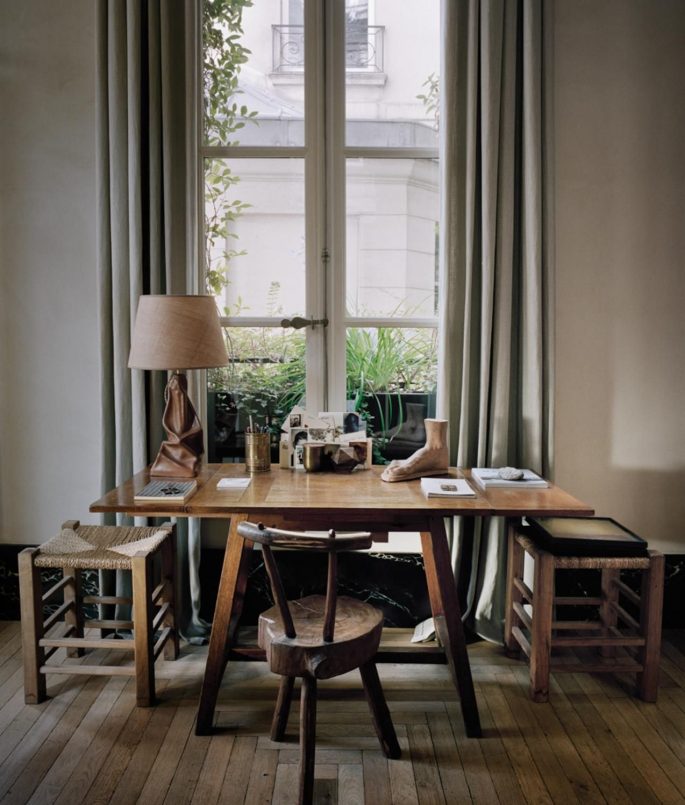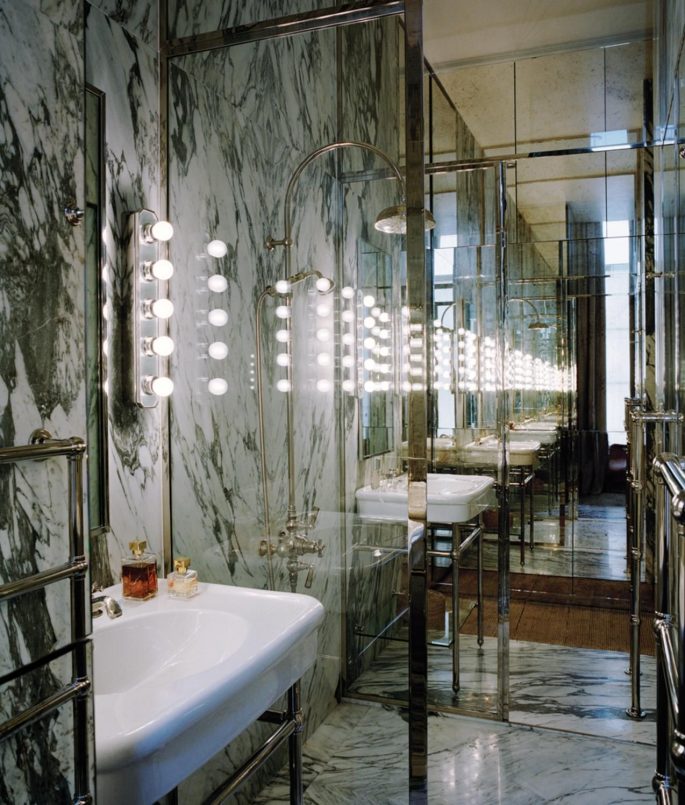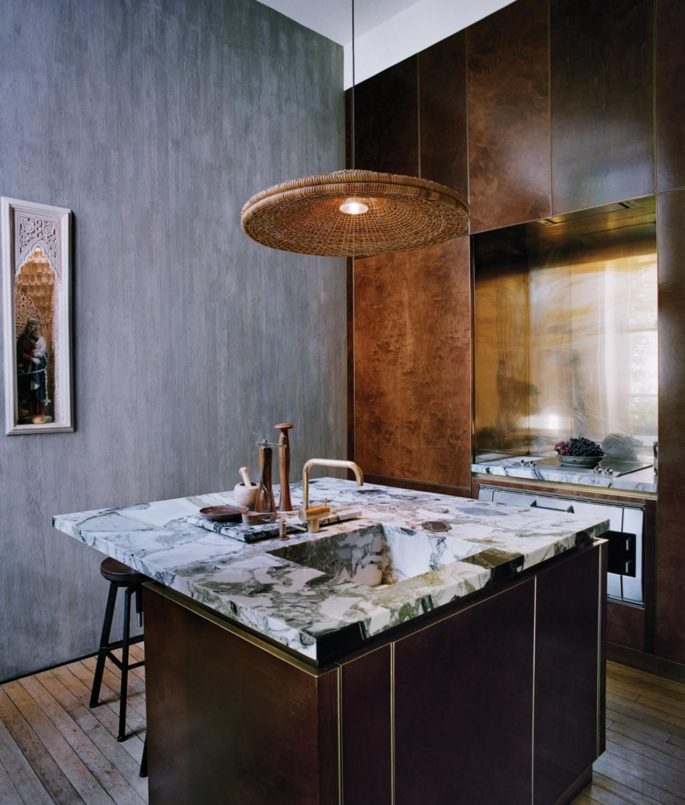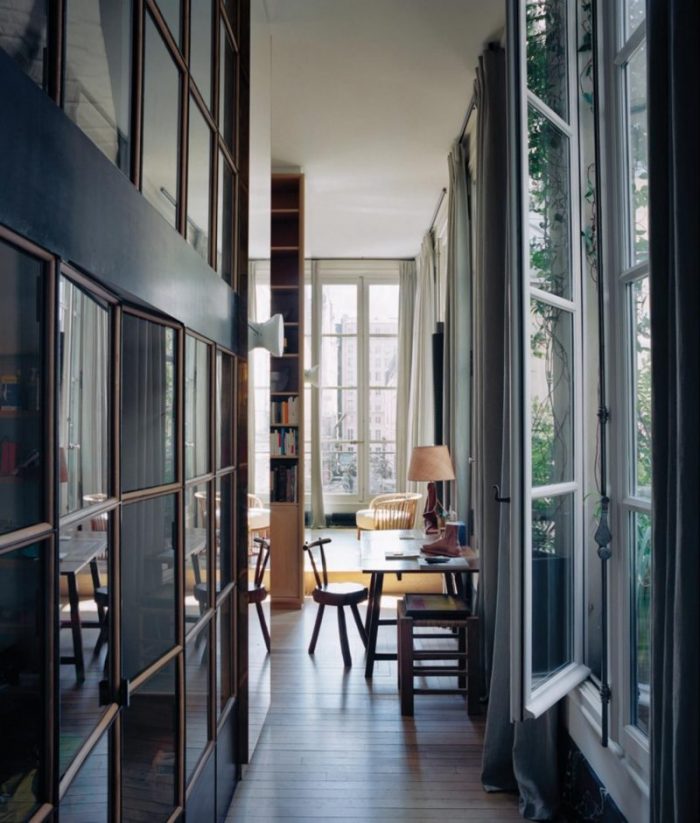Amateur decorators struggle with the same array of variables that interior designers do: furniture, lighting, paint, artwork, rugs, window treatments, and pets determined to destroy those window treatments. But pros take into account an overarching factor that eludes untrained eyes: a room’s visual connection to the adjacent space.
It’s all about the flow or procession. As soon as you enter a home, your eye should be led to another visual destination, because the activity between rooms is what creates a successful, comfortable design.
This was, famously, a tenet of designer and architect Le Corbusier, who said that propelling the eye through a floor plan is a planner’s greatest challenge. So true is this that architectural works can be divided into dead and living ones,” he once explained, “depending on whether the law of ‘roaming through’ has not been observed or whether on the contrary it has been brilliantly obeyed.” So aim to obey. You needn’t make each room exactly like the next to create flow. Clever designers have used contrast just as successfully to tie two rooms together. But do avoid leaps from genre to genre, and continent to continent. No French chateau meets Balinese villa, please. Here are five ways to think about making the link.

Image via Francois Halard for WSJ Magazine.
Find kindred spirits when it comes to upholstery and art
Wide openings, not doors, give way to adjacent spaces which can make flow especially crucial. As you move from room to room it has a theatrical effect, as if you’re going from set to set. From the living room, you might get a generous glimpse of a massive painting abstract in the adjoining dining room. To anticipate the painting, you can introduce upholstery that echoes the canvas’s colours and organic forms. Other unifiers: symmetry, neutral shades (the wall colours, the rug, the artwork’s canvas) and the way the crystal chandelier in the dining room nods to the fussiness of the twin chairs and the gilded table lights.
Allow boldness to lead the eye to more boldness
When decorating your home, a priority might be to showcase a contemporary art collection. Visitors could be drawn from the dining room into an adjacent hallway by a painting. The dining room’s wallpaper, carries on a conversation with the painting. Both the pattern of the wallcovering and the artwork have a kinetic, hand-drawn, oversize quality. Both rely heavily on gestural black lines. Further blending the two spaces: the rough, visible weave of the hallway’s sea-grass rug finds a cousin in the light-grey grid that forms the background of the wallpaper’s organic strokes.
A home should feel like a well-written paper. Each paragraph can make its own point, but there has to be a central theme tying everything together.

Image via Francois Halard for WSJ Magazine.
Unify with contrasts
It’s counterintuitive, but juxtapositions can be unifying. If you have a very high living room ceiling, visible through a doorway, emphasise the coziness in the entry that leads to it. You want everyone who visits to feel enveloped when they first arrive – you can achieve the desired vibe with upholstered walls, timber floors and a plush rug. With white walls, the living room might have an inverse quality. The two spaces can be united by organic furnishings—perhaps, a rustic Oriental sculpture, an antique French chair, a driftwood lamp.
Forge a connection with complementary colours
Let the outside in. Perhaps leaves on a tree outside will inspire a child’s bedroom to look like a treehouse. Then you can look across the colour wheel to devise a palette for an adjacent study. In that room, you might use red. People dismiss red and green as too Christmas-sy, but it’s a magic combination when you play with tones.
Let key materials connect throughout
Connect bathrooms not only to the bedrooms but to the rest of the house – and connect rooms which have been aesthetically divorced by previous renovations to adjoining areas.
Use key materials throughout which can be seen in bedroom doors as well as the ceiling, door casing and medicine chests of the bath.
Other points of harmony: basin fixtures and bedroom lighting are both cast in bronze nickel, and the washbasin’s creamy marble nods to the cream carpet next door.

Image via Francois Halard for WSJ Magazine.


